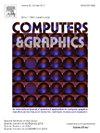基于比例不变相干点漂移算法的AR三维医学模型配准
IF 2.8
4区 计算机科学
Q2 COMPUTER SCIENCE, SOFTWARE ENGINEERING
引用次数: 0
摘要
将术前3D医学模型注册到现实场景中个体的相应区域是基于增强现实(ar)的手术导航系统的关键基础。一个挑战是找到一个合适的空间映射函数从医疗坐标系到AR坐标系。我们的工作重点是使用RGBD点云将3D医学模型注册到颅内结构上。映射函数的计算采用局部人脸特征和一种消除尺度参数的尺度不变相干点漂移(SI-CPD)算法。局部人脸特征显著减少了三维医学模型与场景RGBD点云之间的不匹配特征,而SI-CPD算法将配准过程限制为平移和旋转操作。结果表明,该方法在私人医疗数据集上的目标配准误差(TRE)为1.2498±0.0829 mm,在公共Stanford Bunny数据集上的配准精度较高。与icp型方法相比,SI-CPD算法在处理噪声和异常值方面具有更强的鲁棒性。我们的工作介绍了一种新颖的方法,可以高精度地自动将3D医学模型注册到头部。本文章由计算机程序翻译,如有差异,请以英文原文为准。

3D medical model registration using scale-invariant coherent point drift algorithm for AR
Registering preoperative 3D medical models to the corresponding regions of the individual in a reality scene is a critical foundation for augmented reality-based (AR-based) surgical navigation systems. A challenge is finding an appropriate spatial mapping function from the medical coordinate system to the AR coordinate system. Our work focuses on registering 3D medical models to the intracranial structures using RGBD point clouds. The mapping function is calculated using local facial features and a scale-invariant coherent point drift (SI-CPD) algorithm that eliminates the scaling parameter. The local facial features significantly reduce mismatched features between the 3D medical models and the RGBD point clouds of the scene, while the proposed SI-CPD algorithm restricts the registration process to translation and rotation operations only. Results demonstrate that our method achieves a target registration error (TRE) of 1.2498 ± 0.0829 mm on private medical datasets and superior registration accuracy on the public Stanford Bunny dataset. Compared to ICP-type methods, the SI-CPD algorithm demonstrates enhanced robustness in handling noise and outliers. Our work introduces a novel methodology to automatically register 3D medical models to the head with high accuracy.
求助全文
通过发布文献求助,成功后即可免费获取论文全文。
去求助
来源期刊

Computers & Graphics-Uk
工程技术-计算机:软件工程
CiteScore
5.30
自引率
12.00%
发文量
173
审稿时长
38 days
期刊介绍:
Computers & Graphics is dedicated to disseminate information on research and applications of computer graphics (CG) techniques. The journal encourages articles on:
1. Research and applications of interactive computer graphics. We are particularly interested in novel interaction techniques and applications of CG to problem domains.
2. State-of-the-art papers on late-breaking, cutting-edge research on CG.
3. Information on innovative uses of graphics principles and technologies.
4. Tutorial papers on both teaching CG principles and innovative uses of CG in education.
 求助内容:
求助内容: 应助结果提醒方式:
应助结果提醒方式:


